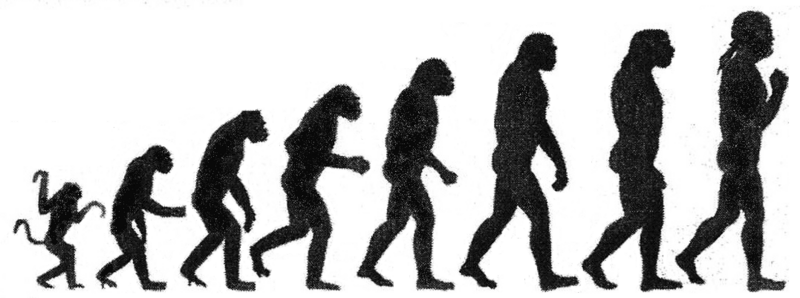Since the days of Darwin, researchers attribute a strong influence to grasslands on the development of the human species, the idea that the evolution of the human species was influenced by grasslands was established in the scriptures and accepted by most researchers

Findings showing that the human species evolved in a forested environment did not greatly influence the conventional wisdom because of the claim that the frequently changing climate caused rapid changes in land cover, changes that were too rapid to affect human evolution.
The significant periods for human evolution were between 3 and 1.5 million years, and also with the beginning of the use of stone tools. The assumption was that, starting from the "paranthropus" to the "homo-erectus" (the upright), the human species became upright in order to be adapted to the retreat of the forests and the opening of plains where a high height has the advantage of seeing in the distance, also from the attitude of standing upright an advantage in a warming climate because by the uprightness There is a relatively low exposure of the body surface to the hot air.
Despite the common opinions, no large grasslands were identified in Africa during the Paleocene period, that is, no areas were identified that could have an impact on the evolution of man in the period that determines even in the grasslands that were identified, no activity of the human species was identified.
Plummer and research colleagues examined and compared archaeological and paleontological findings from Oldubai (Northern Tanzania), and Kanjera in Kenya, findings that enabled the reconstruction of the habitats about 2 million years ago.
According to the reconstruction, it turns out that the common habitat was indeed - a grassy plain. Tools were found that were used for cutting meat and splitting bones, the places of the tools were identified as grassy plains, the remains of the bones were identified as animal bones from the plains, together with this findings from Kanjera point to the possibility that human species lived and worked in a wide variety of habitats - grassy plains, forests and dry woods, all They were habitats for the ancient human species.
The conclusion of Plumer and his colleagues is that, "primitive man was adaptable and flexible, which allowed him to live in a wide variety of habitats", an adaptability and flexibility that distinguishes him from his australopithecine predecessors, a flexibility and adaptability that enabled a diverse use of territories, a use that contributed to the development of the human race.

3 תגובות
http://en.wikipedia.org/wiki/Oliver_(chimpanzee)
I recommend watching the video about Oliver, the chimpanzee who looks and acts like a human.
The video is divided into 6 parts and is in very good quality on YouTube.
http://www.youtube.com/watch?v=-C6NkRUbI38
You should read "Scars of Evolution" by Elaine Morgan
On the "aquatic man-monkey theory" if only for the sake of thinking.